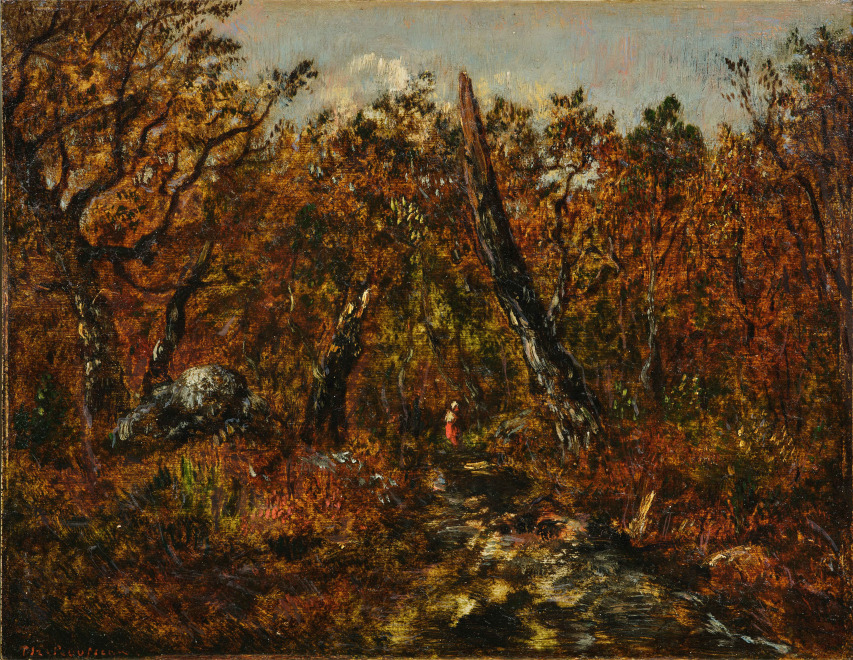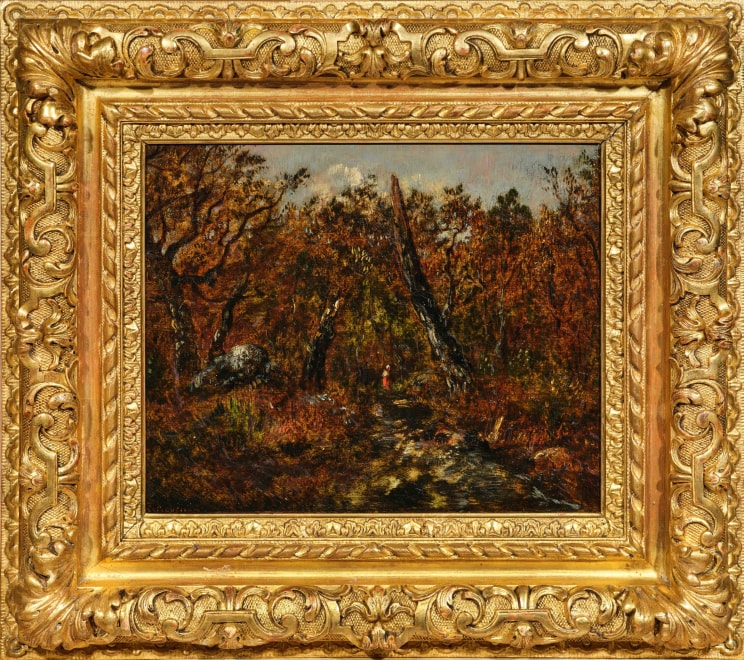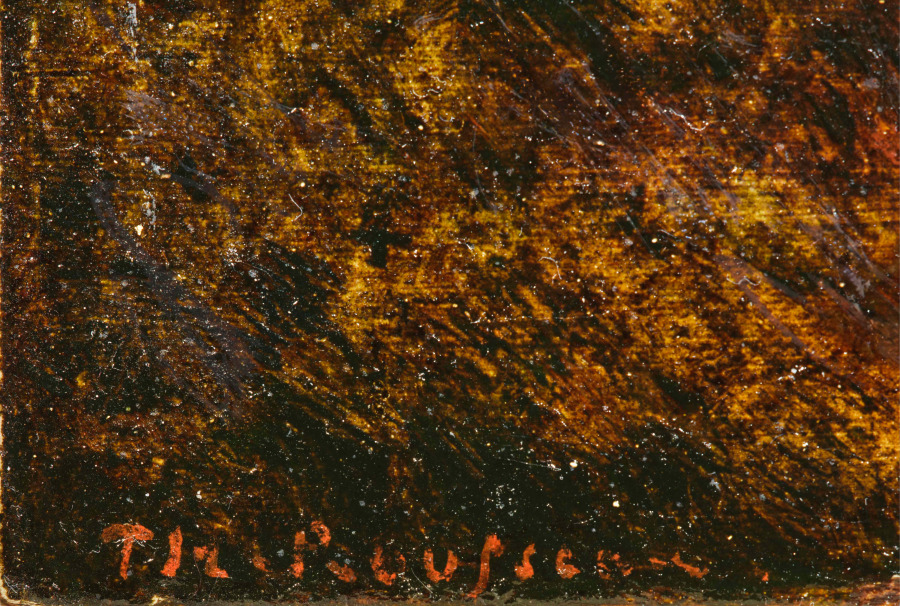Provenance
collection Paul Touzet (1898-1981)
Private collection
Exhibited
Paris, Galerie Charpentier, Le Paysage français de Corot à nos jours, 1942, no.156
Catalogue note
Théodore Rousseau’s Blasted Oak embodies the essence of the Barbizon school, characterized by its intimate exploration of nature. A leading figure in this movement, Rousseau sought to capture the raw, unidealized beauty of the French countryside, moving away from the traditional academic style that emphasized classical forms and idealized landscapes. Much of his inspiration came from the forests of Fontainebleau, where he spent considerable time painting. Previously owned by Paul Touzet (1898-1981), who opened his first gallery on rue de l’Université in the interwar period and later became a leading art expert in the heart of Paris, this painting is a testament to both Rousseau’s mastery and the exceptional quality that Touzet curated.
Rousseau was known for his tireless walks through nature, often roaming the forests long after sunset. “He walked incessantly, and the night found him often amidst the rocks, which, in the moonlight, seemed huge,” wrote the American professor Charles Sprague Smith (1853-1910). To Rousseau, the forest was full of life, with each tree telling its own story. In a conversation with the art critic Alfred Sensier (1815-1877), Rousseau reflected, “I heard the voices of the trees; the surprises of their movements. Their varieties of form and even their peculiarity of attraction toward the light had suddenly revealed to me the language of the forest. ” This profound revelation of nature’s language drove him to seek a deeper connection with the world around him. “All that world of flora lived as mutes, whose signs I divined, whose passions I discovered. I wished to converse with them and to be able to say to myself, through that other language, painting, that I had put my finger upon the secret of their grandeur. ”
In Blasted Oak rugged trees stretch towards the sky, their gnarled branches framed against autumnal hues. The palette, rich in dark greens, oranges, and deep browns, captures the season’s transition and the melancholic beauty of a changing forest. Fallen leaves carpet the path, inviting the viewer into the quiet stillness of the scene. Some trees stand whole, while others appear as broken remnants, adding to the landscape’s raw, untamed character. Light filtering through the branches highlights the rough textures of bark and leaves, revealing Rousseau’s mastery in evoking nature’s mood and spirit. A solitary figure in a red skirt emerges in the distance, adding contrast and scale, making the scene both intimate and expansive—a powerful portrayal of humanity within the vast wilderness of the natural world.
This note was written by Elsa Dikkes.






